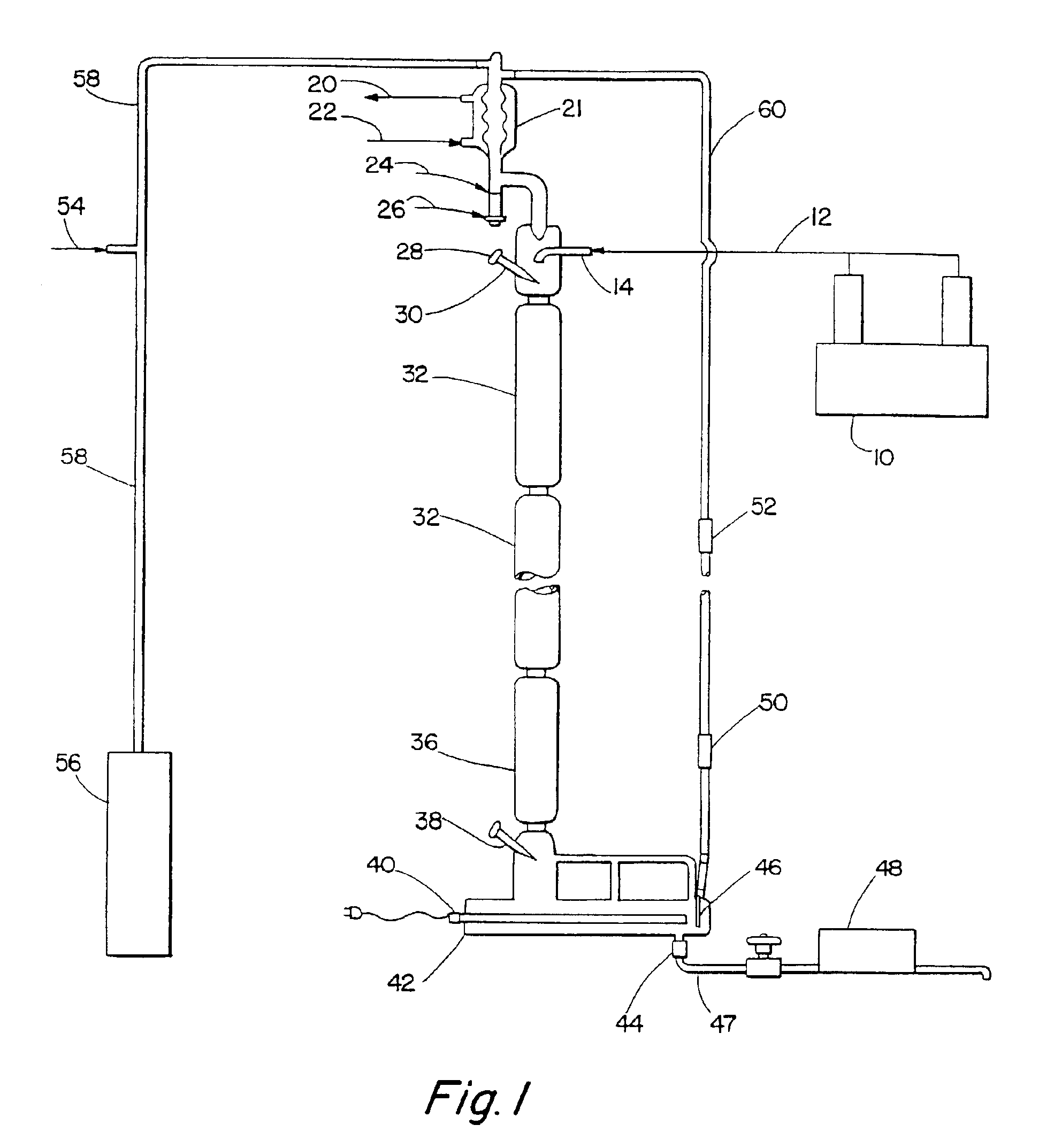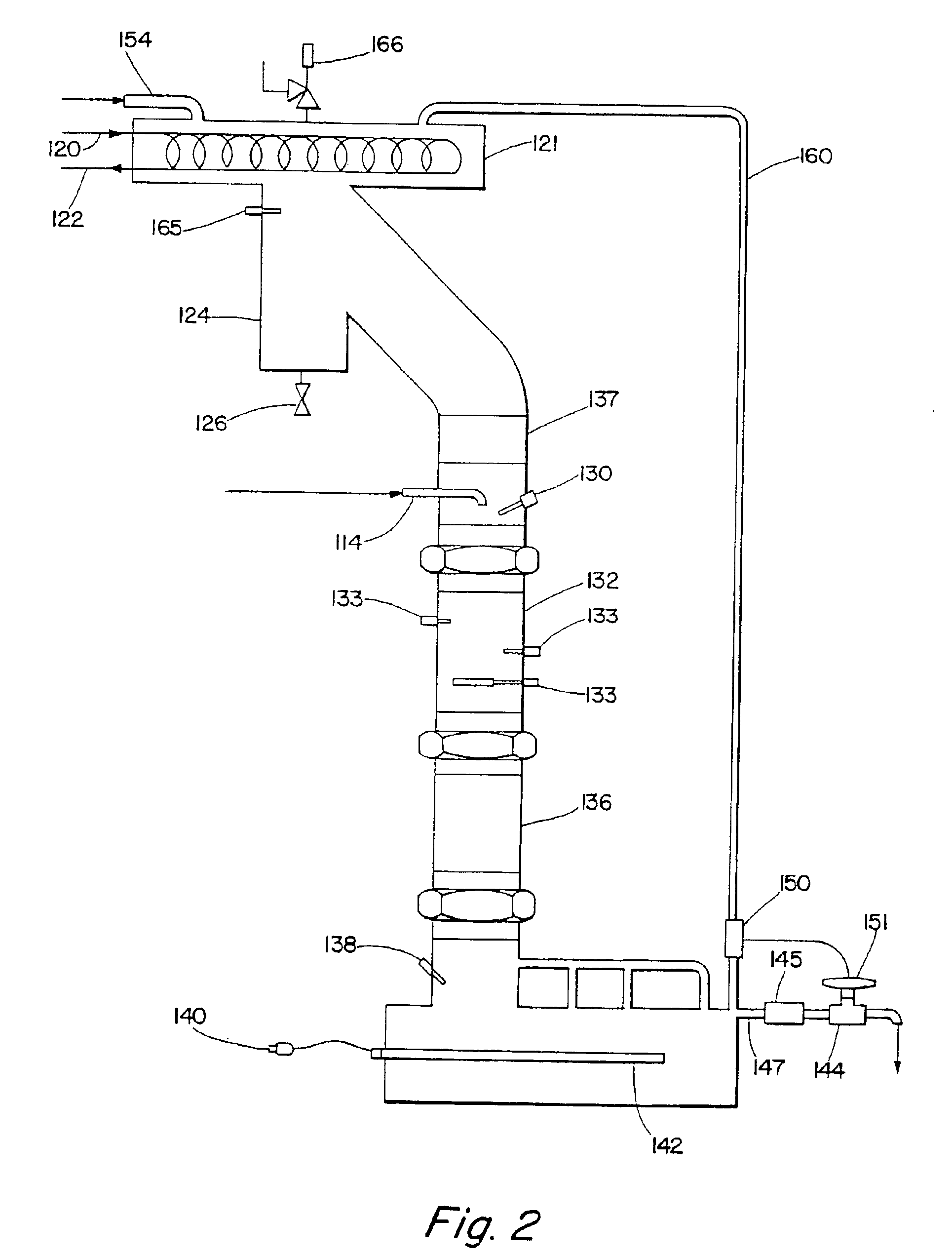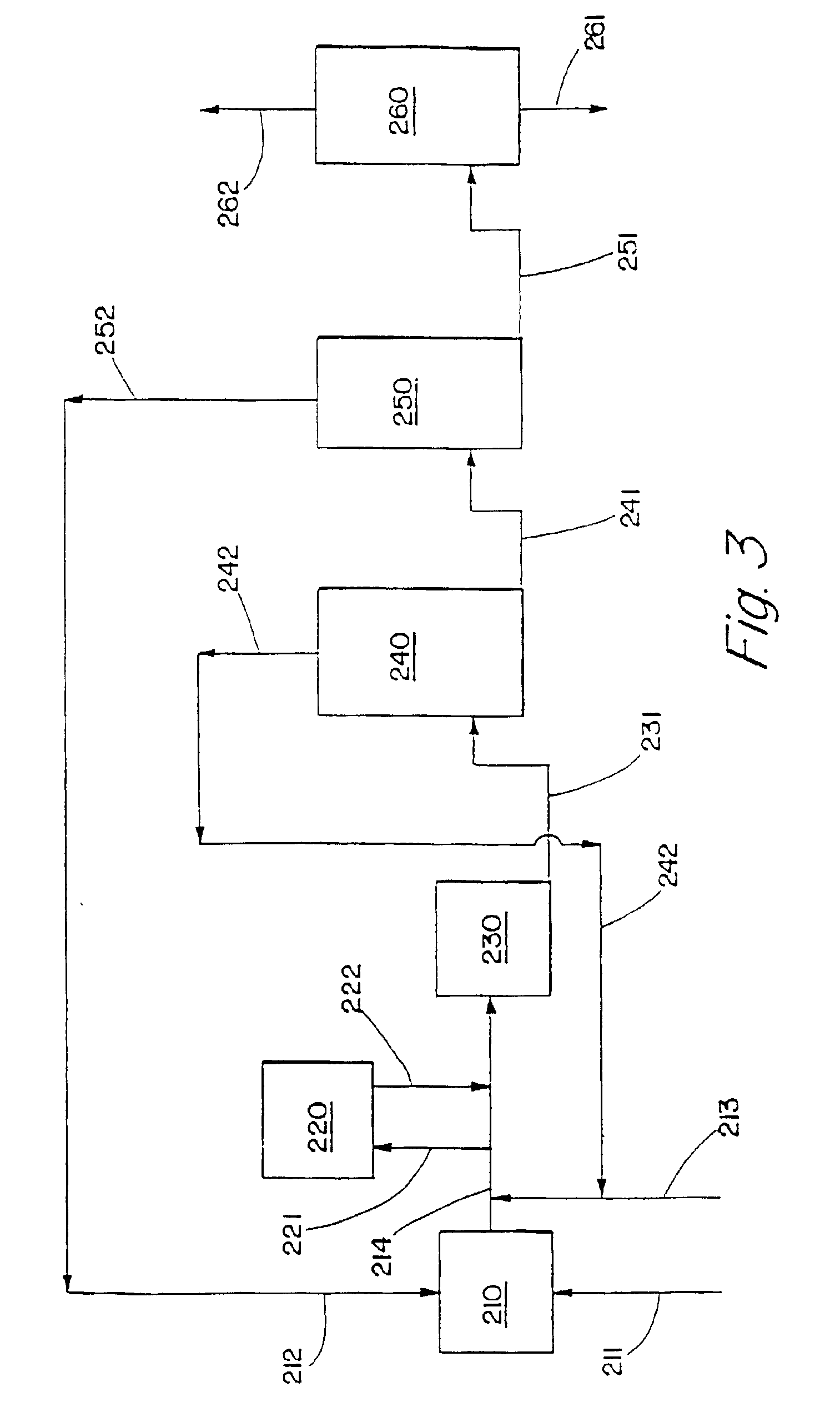Alkylbenzene detergents with high 2-isomer content
a technology of alkylbenzene detergent and olefin, which is applied in the direction of detergent compounding agents, liquid soaps, organic chemistry, etc., can solve the problems of reducing the selectivity of 2-phenyl isomer lab, and affecting the stability of the catalyst bed. , to achieve the effect of high substrate olefin conversion, long life and high selectivity
- Summary
- Abstract
- Description
- Claims
- Application Information
AI Technical Summary
Benefits of technology
Problems solved by technology
Method used
Image
Examples
example a
[0101]This example illustrates the preparation of a hydrogen fluoride-modified mordenite.
[0102]To 30 g of acidified mordenite (LZM-8, SiO2 / Al2O3 ratio 17; Na2O wt % 0.02, surface area 517 m2 / g, powder, from Union Carbide Corp.) was added 600 ml of 0.4% hydrofluoric acid solution, at room temperature. After 5 hours the solid zeolite was removed by filtration, washed with distilled water, dried at 120° C. overnight, and calcined at 538° C.
example b
[0103]The example illustrates the preparation of a hydrogen fluoride-modified mordenite.
[0104]To 500 g of acidified, dealuminized, mordenite (CBV-20A from PQ Corp.; SiO2 / Al2O3 molar ratio 20; Na2O, 0.02 wt %; surface area 550 m2 / g, 1 / 16″ diameter extrudates, that had been calcined at 538° C., overnight) was added a solution of 33 ml of 48% HF solution in 1633 ml of distilled water, the mix was cooled in ice, stirred on a rotary evaporator overnight, then filtered to recover the extruded solids. The extrudates were further washed with distilled water, dried in vacuo at 100° C., and then calcined at 538° C., overnight.
[0105]Analyses of the treated mordenite showed:
[0106]
F:1.2%Acidity:0.49 meq / g
example 1
[0107]This example illustrates the preparation of linear alkylbenzenes using a hydrogen fluoride-modified mordenite catalyst.
[0108]To a 500 ml flask, fitted with condenser and Dean Stark Trap was added 100 ml of benzene (reagent grade) plus 10 g of hydrogen fluoride-modified mordenite zeolite, prepared by the method of Example A. The mix was refluxed for 15-20 minutes to remove small amounts of moisture, then a combination of benzene (50 ml) plus 1-dodecene (10 g) was injected into the flask and the solution allowed to reflux for 3 hours.
[0109]Upon cooling, the modified mordenite catalyst was removed by filtration, the filtrate liquid flashed to remove unreacted benzene, and the bottoms liquid analyzed by gas chromatography.
[0110]Typical analytical data are summarized in Table 1.
[0111]
TABLE 1LINEARLAB ISOMER DISTRIBUTIONLABDODECENE(%)HEAVIES(LLAB)CONV. (%)2-Ph3-Ph4-Ph5-Ph6-Ph(%)(%)99.779.916.60.81.31.30.295.9
PUM
| Property | Measurement | Unit |
|---|---|---|
| Fraction | aaaaa | aaaaa |
| Fraction | aaaaa | aaaaa |
| Fraction | aaaaa | aaaaa |
Abstract
Description
Claims
Application Information
 Login to View More
Login to View More - R&D
- Intellectual Property
- Life Sciences
- Materials
- Tech Scout
- Unparalleled Data Quality
- Higher Quality Content
- 60% Fewer Hallucinations
Browse by: Latest US Patents, China's latest patents, Technical Efficacy Thesaurus, Application Domain, Technology Topic, Popular Technical Reports.
© 2025 PatSnap. All rights reserved.Legal|Privacy policy|Modern Slavery Act Transparency Statement|Sitemap|About US| Contact US: help@patsnap.com



